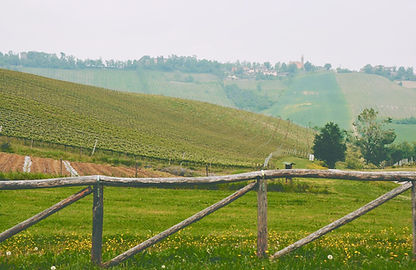The Manor Farm

General message and context
On a surface level, Thomas describes a scene of an old Manor Farm in February, where he perceives a Church and tree opposite. He comments on the age of the Farm, Church and Tree, versus the renewing world around them. He seems to say that despite the transitions of the seasons, these three things represent an older version of England which has not and cannot be destroyed. There is a sense of triumph in the English earth here, suggesting the inability of war (among other things) to destroy the English landscape.
In-depth analysis line by line
ll. 1-3: Thomas initially describes the thawing of the ‘rock-like mud’, which runs in ‘rills’ down the road, under catkins. Enjambment in this first sentence over the first three lines mirrors the running of the stream. Rs and Ls are liquid syllables, so we may think of the alliteration in liquid syllables as imitating the stream itself. There seems to be a beauty and life in the landscape itself, the stream ‘sparkles’ and we see the ‘catkins wagging in the hedge’, personified as ‘wagging’, a dainty and almost impish movement, showing the joy of nature in being alive.
l. 4: Yet although it is daytime, Thomas says, the ‘earth’ personified again insists on remaining asleep, as though a giant dreamer in this landscape.
Ll. 5-7: The ‘thin gilding beam’ mirrors the rays of the sun, which Thomas sees as meaningless until he sees the Manor Farm. Assonance in ‘thin’ and ‘gilding’ suggest a half-rhyme between the two, creating a pure lyricism in this landscape that conveys its beauty. In the poem it seems Thomas describes his own realisation of this natural beauty. His initial understanding of it as a ‘pretty February thing’ suggests mockery and a demeaning tone, as though he refuses to even give it a true noun to describe it.
Poem often uses words at the start of lines (prepositions and changes) to show his own changing direction as he wanders through the landscape mentally and physically.
L. 8-9: He identifies a Church and a yew opposite the Farm. Yews are poisonous and grow best in graveyards, so they are the symbol of earth renewing out of death in a cycle. Often associated with warding off evil and also with death. All of these are monuments of Religion, Resurrection/Death, Cultivation and Life. The three stand in opposition yet also in partnership to define the still eternity of the British landscape. The fact that are equal in size shows their harmonious and nebulously grand existence.
L.9-10: The figures sleep, giving a sense of personal isolation and also a moment on a day of rest where the entire landscape is also resting. Again, the landscape is personified, as though it is one great person with many component parts.
L. 11: This alludes to the fact that the atmosphere is so still that even the wind touches nothing. (Winds often signify time and change). Caesura creates an unexpected stop, reflecting the stillness of the air and the stopping of time.
L. 11-14: The roof reflects the rays of the sun, linking anaphorically back - showing the rays as now possessed with meaning and thus given more grandeur in the description. ‘Duskily’ is semi-juxtaposed with ‘mid-day sun’. A temporal paradox is created, which reflects the liminality of this scene. The fact that the roof ‘entertained’ the sun suggests it acknowledges the sun as a transient creature as opposed to its own stability. The ‘white-pigeons’ which nestle ‘up and down the roof’ give the first sign of life in the poem, a poetic and romantic symbol for beauty and peace. ‘Up and down’ suggests constant motion and movement contrasting the stillness, maybe giving a sense of a biblical image, moving between heaven and earth.
Ll. 15-17: The last lines are slightly more ambiguous, ‘There was no sound but one’ suggesting an importance of an extremely unimportant image. The cart-horses create a symbol of nature and rural labour, their ‘drowsiness’ suggests again the peaceful, lulling atmosphere of this place. Their only care is the ‘solitary fly’ which moves against them. ‘Against a fly, a solitary fly’, emphasizes the fly despite its smallness. Despite this, it seems both important and unimportant to the houses. Strange confusion in tone between whether this is intended to suggest the tiniest details which are all that complained about in this atmosphere, or whether to some the fly is the individual life which is entirely unimportant in this place.
Ll. 18-20: In these lines, focus changes - Winter is personified oxymoronically. The supposed coldness of winter is juxtaposed with the ‘flushed’ face of Winter, as though he has sucked the life from the other seasons ‘And smiled quietly’. The latter here suggests the peacefulness of Winter.
Ll. -18: Thomas, however, then goes on to say that this is not Winter, though it appears to be. Instead it is a season which can’t be named, a time (paradoxically) of constant happiness. The inverted word order in ‘bliss unchangeable’ strongly emphasizes the stability and resistance of this blissful scene.
L19 -: The season has been ‘awakened’ from the distant past and the time of ‘Merry Old England’, a golden age for the country. ‘Safe under tile and thatch’ suggests the way in which this grandeur has been lurking in our most humble institutions, endemic to the very small things which make up England and which make it so great.
Form and structure
Form works organically in the poem (free verse). Lack of rhyme scheme barring internal rhymes and lack of metre create a sense of fluidity, conversationality and also liminality. This is somewhere between the borders of prose and poetry. Nevertheless, it has a strong lyrical sense - it is melodic and song-like, and has numerous beautiful images.
Poem is broken into two stanzas, reflecting the changing focus of the poem. The first observes the symbolic scene and the second reveals the meaning of this.

